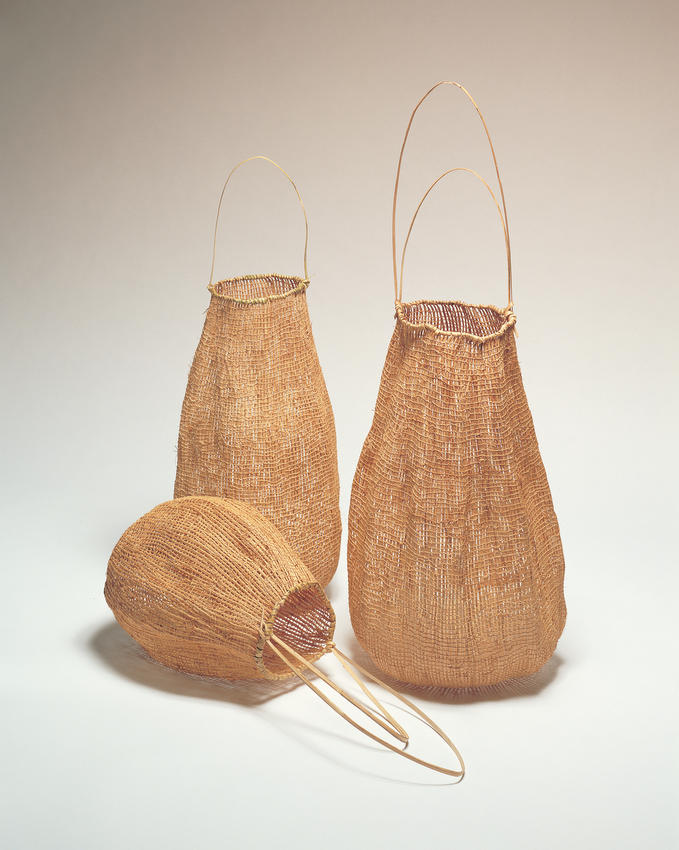We acknowledge the Traditional Owners of the land on which the Queensland Art Gallery | Gallery of Modern Art stands and recognise the creative contribution First Australians make to the art and culture of this country.

Wilma Walker / Kuku Yalanji people / Australia 1929–2008 / Kakan (Baskets) 2002 / Twined black palm (Normanbya normanbyi) fibre (basket), with lawyer cane (Calamus sp.) fibre (handle) / Commissioned 2002 with funds from the Queensland Art Gallery Foundation Grant / Collection: Queensland Art Gallery | Gallery of Modern Art / © Wilma Walker
Wilma WalkerKakan (Baskets) 2002
Not Currently on Display
Wilma Walker’s baskets use traditional forms and styles of weaving to reflect on events from the artist’s own history. Walker taught herself to make these baskets by recalling childhood memories of watching women weaving them.
As a child, Walker was hidden inside baskets by family members to prevent government officials removing her from her family, as was the government policy at the time. Walker has told of her story:
I born up the (Mossman) Gorge on the riverbank in a gunya and police come along look for all the half-caste kids, but they hid me . . . my mother, we had to hide. In them baskets . . . and they hide me in that and give me (seed-pod rattles); lot, put in there, keep me quiet . . . when them police come say ‘No one here. No more kids. All gone . . . take ’em all away’.
Wilma Walker was an elder of the Kuku Yalanji people from Mossman Gorge, east Cape York. Her Aboriginal names are Ngadijina and Bambimilbirrja.
She was one of the few women from her community who continued to weave baskets in the traditional way. Walker promoted her Indigenous culture, particularly by teaching weaving to the children in her community.
Discussion Questions
1. Why was it important to Walker to share her childhood memories by weaving baskets?
2. How has the artist conveyed her childhood experience in the making of these baskets?
Classroom Activities
1. Think of a memory you have about your family that is important to you. Draw this memory to share with your class.
2. Choose an important event in your life and select an art form to best represent your memory of it. Consider how materials and objects can communicate memory through the senses.